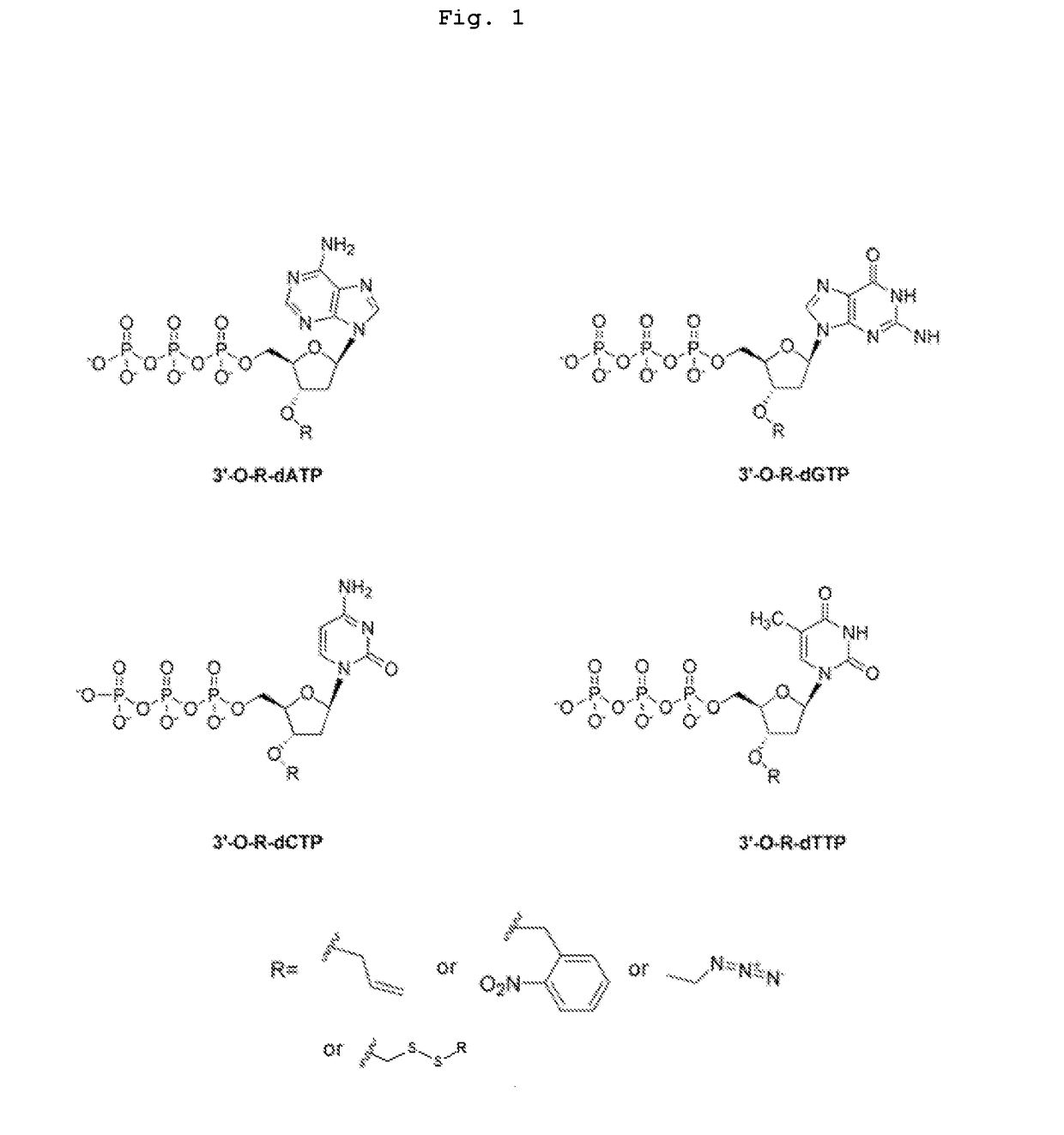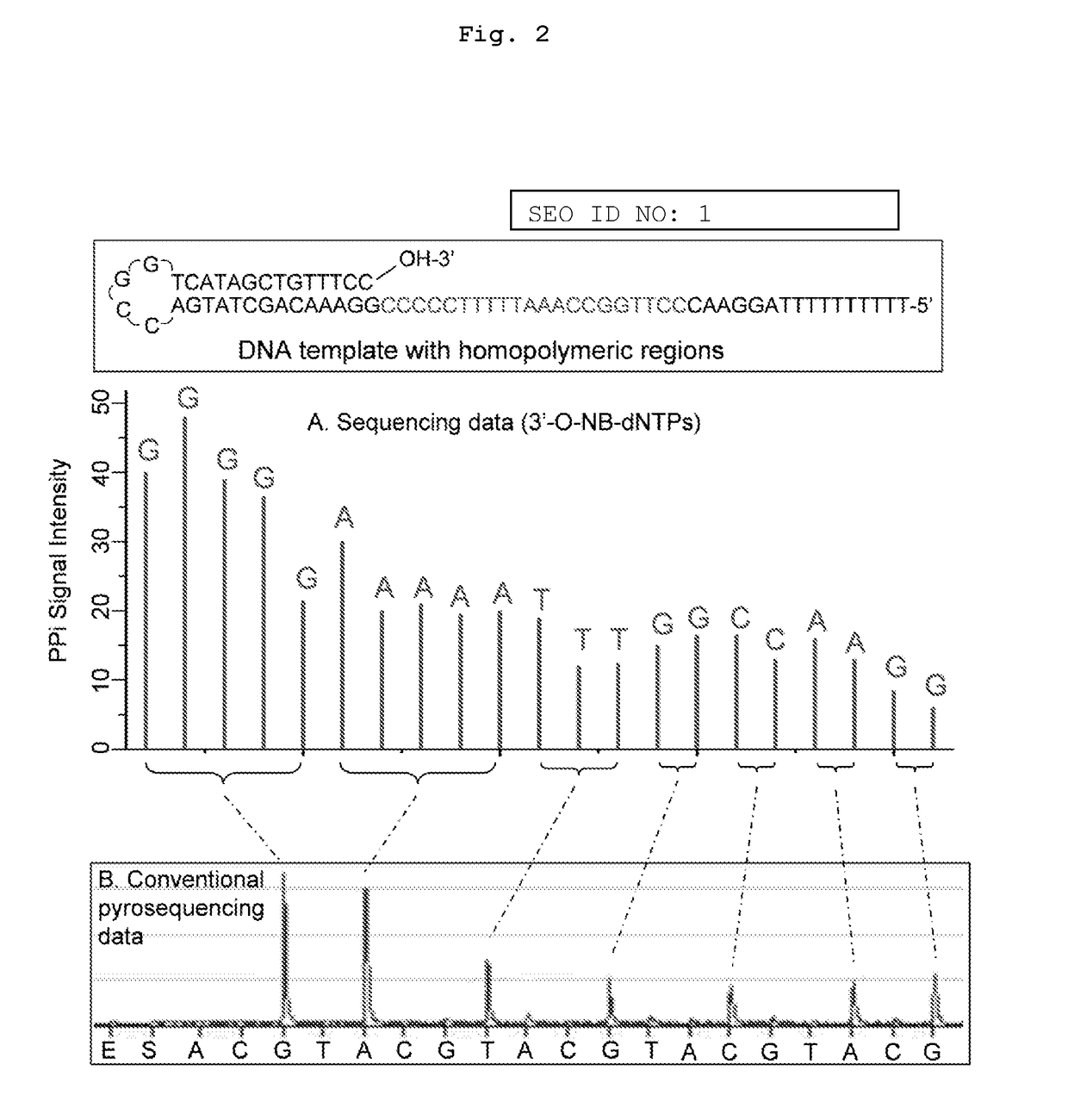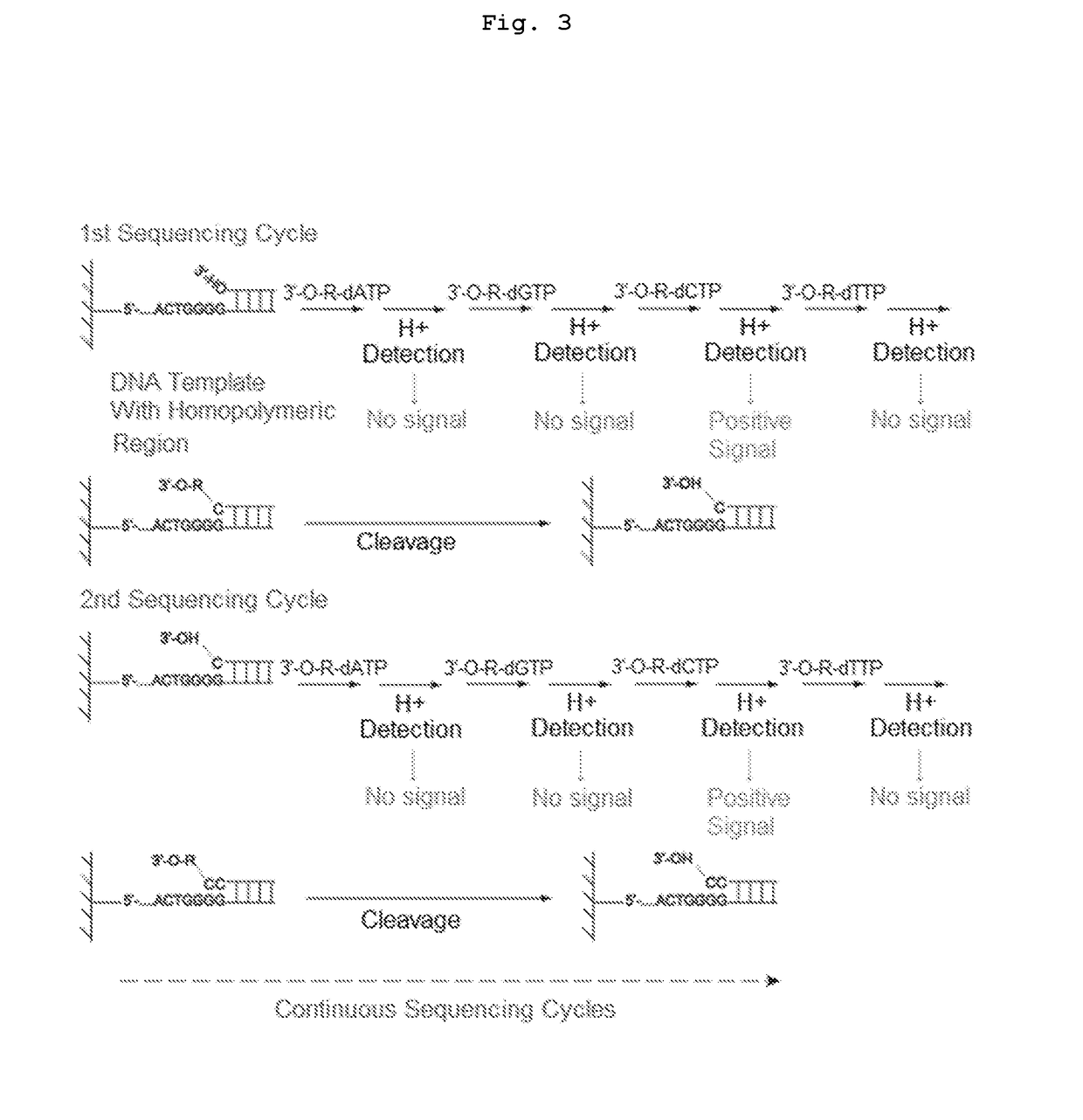Ion sensor DNA and RNA sequencing by synthesis using nucleotide reversible terminators
- Summary
- Abstract
- Description
- Claims
- Application Information
AI Technical Summary
Benefits of technology
Problems solved by technology
Method used
Image
Examples
Embodiment Construction
[0079]The present invention is directed to a method for determining the identity of a nucleotide residue of a single-stranded DNA in a solution comprising:[0080](a) contacting the single-stranded DNA, having a primer hybridized to a portion thereof, with a DNA polymerase and a deoxyribonucleotide triphosphate (dNTP) analogue under conditions permitting the DNA polymerase to catalyze incorporation of the dNTP analogue into the primer if it is complementary to the nucleotide residue of the single-stranded DNA which is immediately 5′ to a nucleotide residue of the single-stranded DNA hybridized to the 3′ terminal nucleotide residue of the primer, so as to form a DNA extension product, wherein (1) the dNTP analogue has the structure:
[0081]wherein B is a base and is adenine, guanine, cytosine, or thymine, and (2) R′ is (i) —CH2N3 or 2-nitrobenzyl, (ii) is a hydrocarbyl, or a substituted hydrocarbyl, having a mass of less than 300 daltons, or (iii) is a dithio moiety; and[0082](b) determi...
PUM
| Property | Measurement | Unit |
|---|---|---|
| Length | aaaaa | aaaaa |
| Length | aaaaa | aaaaa |
| Mass | aaaaa | aaaaa |
Abstract
Description
Claims
Application Information
 Login to View More
Login to View More - R&D
- Intellectual Property
- Life Sciences
- Materials
- Tech Scout
- Unparalleled Data Quality
- Higher Quality Content
- 60% Fewer Hallucinations
Browse by: Latest US Patents, China's latest patents, Technical Efficacy Thesaurus, Application Domain, Technology Topic, Popular Technical Reports.
© 2025 PatSnap. All rights reserved.Legal|Privacy policy|Modern Slavery Act Transparency Statement|Sitemap|About US| Contact US: help@patsnap.com



